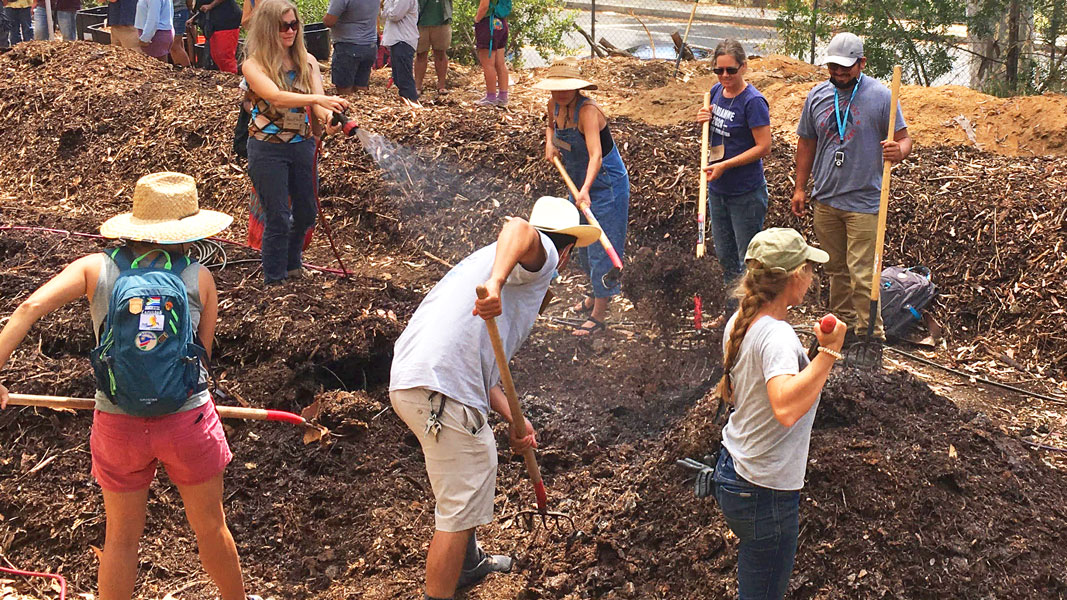Top: Windrow turning at Debs Regional Park compost hub in Los Angeles. Photo by Kourtnii Brown
The Environmental Law Institute (ELI) and NRDC, in collaboration with the Institute for Local Self-Reliance, released a Model Community Composting Ordinance that provides municipalities with “clean, ‘off-the-shelf’ legal language to establish and govern community composting as a permissible land use across five basic zoning district categories.” These categories are commercial and industrial (in which community composting is zoned by right as a primary use); agricultural (by right as an accessory use); and residential and mixed use (conditional use). “If a zoning code treats composting facilities the same way that it treats large waste facilities such as landfills and incinerators — or if the zoning code doesn’t explicitly cover composting at all — then local zoning laws may unnecessarily prevent or restrict the siting of community composting facilities,” explain NRDC and ELI. The model also sets specific standards that are necessary to obtain the conditional use permit (which is required in residential and mixed-use zones) and lays out other relevant provisions, e.g., prohibited feedstocks, to regulate community composting as a land use. Where applicable, the model also requires that community composting be included in a municipality’s comprehensive or master plan to help secure its place in official visions for the municipality’s future.










